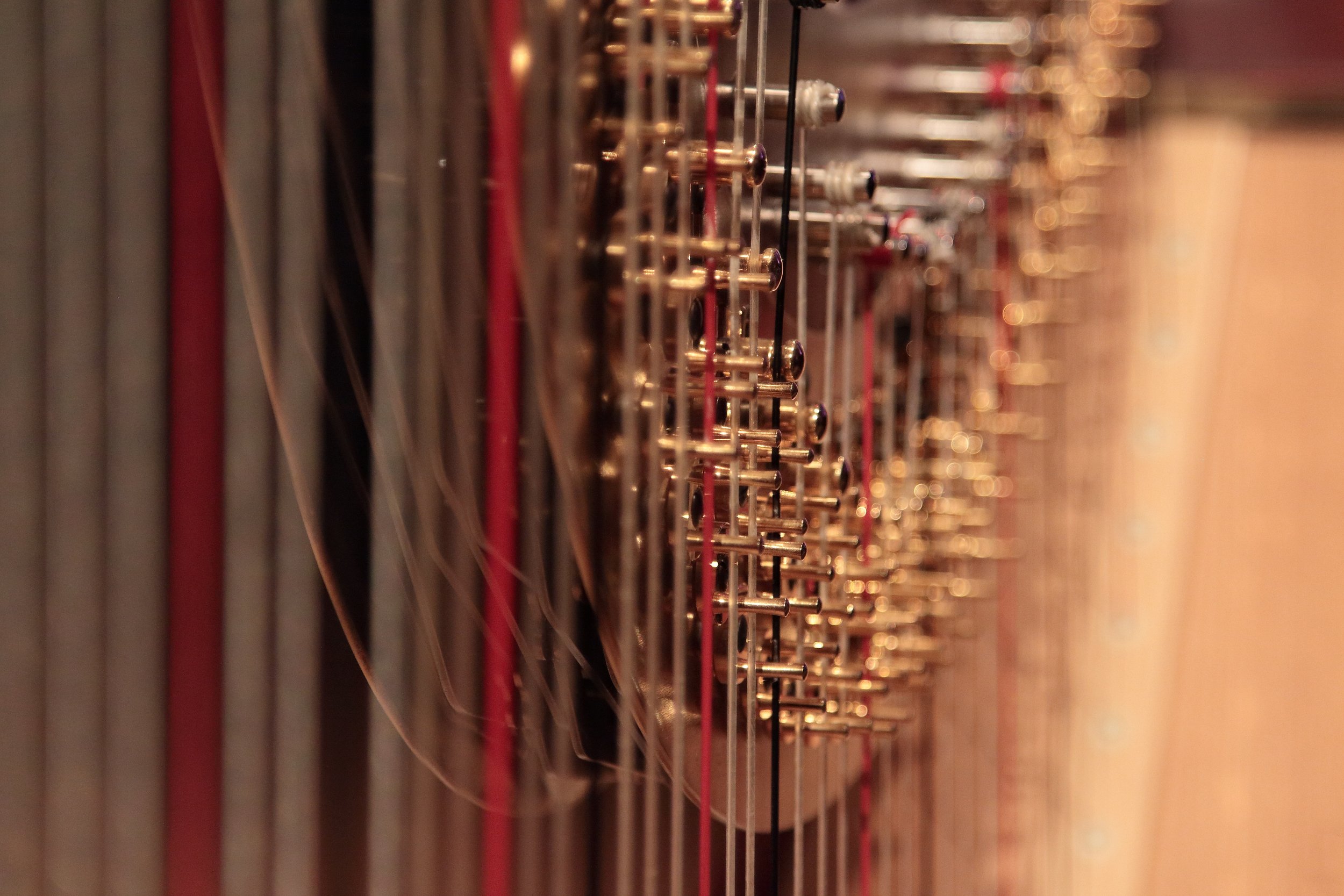The Physics of
Feeling Music
Unraveling the origins of music to help understand how life is woven together into an incredible cosmic tapestry of sound.
Musical Physics: The Phenomenon of Resonance does not require any prior knowledge of music or science.
What you’ll learn:
How “sound” works
Why clarinets don’t sound like trumpets
Where the “feeling” of music comes from
Musical Physics is a live presentation researched and developed by J. Golko, debuting in April 2022.

The Science of Sound
Being a musician of over twenty years,
I’ve studied music in a variety of forms:
instrumentally, harmonically, and scientifically.
Though I had been aware of the overtone series (the upper harmonics produced when an instrument makes a single sound), it was in 2013 that I started reading Paul Hindemith’s The Craft of Musical Composition and became enlightened to the mathematical phenomena of quantifiable “frequency.”
According to historians, among the first musical instruments ever created was the stringed harp - then called a “lyre.”
The first harp appeared in ancient Egypt between 3000 and 2500 BC.
The 6th century Greek mathematician and philosopher, Pythagoras, studied the vibration of strings and developed the very first tuning system in human civilization.

The Feeling of Vibration
Once upon a time…
I had been contracted and cast by Royal Caribbean cruise line to assume the mantel of a one-of-a-kind, never-seen-before brand of entertainment.
From this moment on, nothing would ring quite the same.
While this production show did not involve playing any of my native woodwinds, as a multi-instrumentalist and stage performer, I was asked to learn and write music for 7 new musical instruments created by architect and inventor, William Close.
It was during this time that I became “The Maestro of Sonic Odyssey” - an immersive experience with singers, dancers, aerialists, a live band, and at the center of it all, a real-life, mythological instrument called the “Earth Harp.”
The Earth Harp is a massive, acoustic string instrument, first built by William Close in 1999.
Its strings run from the body - the “bridge” - out over the audience to balconies, valleys, mountainsides, or even record-breaking 800-foot tall skyscrapers.
Naturally, it holds the title in the Guinness Book of World Records for the “world’s longest string instrument.”
The Earth Harp generates sound by pulling on individual strings, resonating each pitch to life - similar to the experience of playing crystal water glasses.
The power of this particular harp is felt directly in the forearms, as each note vibrates across its string (between 40 to 60-feet long) through the fingertips, resonating the entire human body.
Between the years 2014 and 2016, I had committed my artistic life to developing music for the Earth Harp and gaining a closer relationship with the origin of sound - to literally feel the “fabric of frequency.”
As I began to research the history and physics of string instruments, I eventually fell upon a concept known in the scientific community as “string theory.”

STRING THEORY
The Essence of Existence
-
String theory suggests all that exists in our universe is caused and influenced by vibrations that reverberate throughout the cosmos on the tiniest of strings - rippling all throughout the "fabric" of space-time.
-
“If you want to find the secrets of the universe, think in terms of energy, frequency, and vibration.”
- Nikola Tesla -
The discovery of gravitational waves by LIGO in 2015 marks the first evidence behind all the mysteries of our universe and the origin of life.
Romantically speaking,
the source may be waves of cosmic “music” played by a microscopic symphony of resonating strings of matter.The sound of music is a longitudinal wave, which means it travels in a spiraling series of compressions and rarefactions - like the Slinky dog from “Toy Story.”
These kinds of waves don’t wash over us like that of a tidal wave from the ocean.
Soundwaves push through us - gripping and releasing our cells, vibrating our very essence down to the molecular level.
-
“Music is the only paradigm rich enough to explain the universe.”
These are the words of Japanese-American physicist, Michio Kaku, the co-founder of “String Field Theory.”
As an author, Dr. Kaku excels at explaining the complexities of physics and technologies of the future.
When it comes to the relationship between music and the entire universe, the good doctor puts it this way:
“In string theory, all particles are vibrations on a tiny rubber band……the universe is a symphony of strings, and the 'mind of God' is cosmic music resonating in 11-dimensional hyperspace.”
Many of the terms we review in Musical Physics: The Phenomenon of Resonance may be considered 'common knowledge.'
The magic of the presentation is how all the pieces of the sonic puzzle fit together, leading to the "ah-ha!" moment of recognizing how much vibration has to do with our daily lives and our relationship to the universe that surrounds us.

Musical Resources
Over the past 10 years, with the aid of the internet and an international career as a performing musician, my research in the fields of music history and the science of sound stems from the following sources:
Michio Kaku - physicist & author, New York Times Beller Seller
Howard Goodall - musicologist & documentarian, BBC: “The Story of Music”
Paul Hindemith - composer & author, “The Craft of Musical Composition”
Alan Watts - philosopher & author, “The Web of Life”
Encyclopædia Britannica, Wikipedia, & YouTube
Berklee College of Music - particularly that one semester I majored in Music Synthesis(!)








